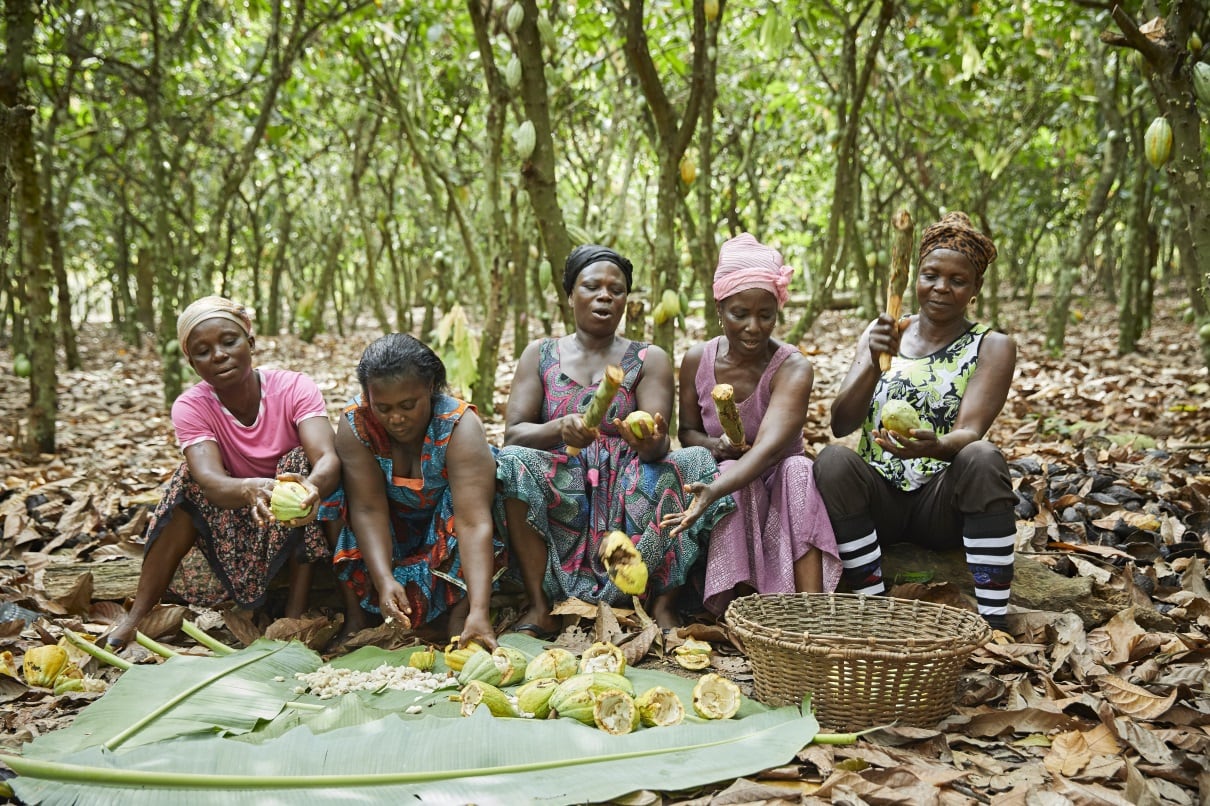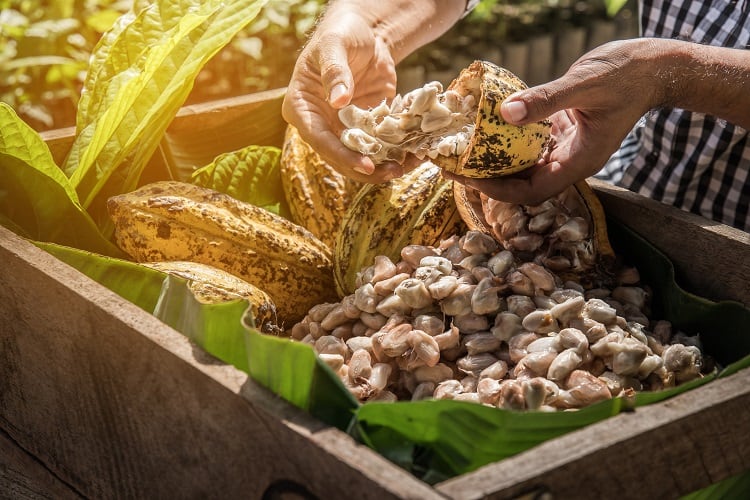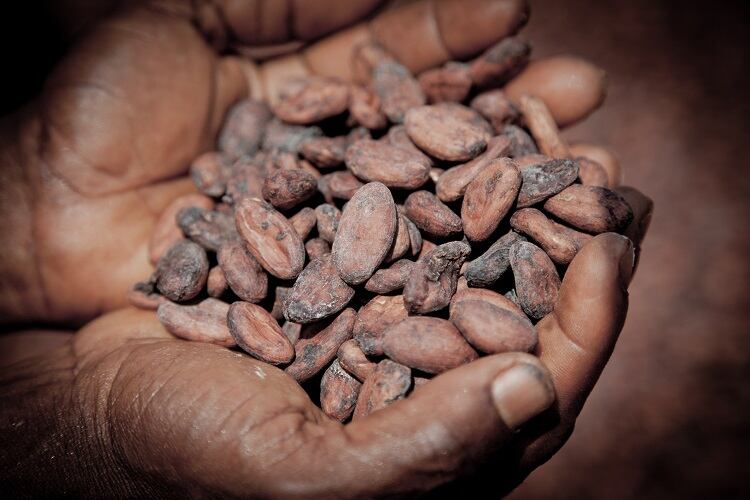All of Olam Cocoa’s directly sourced cocoa – two-thirds of the cocoa it purchases – can now be traced through the company’s end-to-end traceability system which tracks cocoa at ‘every stage’ in the direct supply chain across nine countries.
The company is able to collect data including farm and community metrics, cocoa bean purchasing and transportation information, and details of the facility where the cocoa was processed.
The initiative means that 12% of the world’s cocoa beans can be traced by Olam Cocoa to the farm or community where they were produced.
Announcing the milestone, Olam Cocoa said that it is now able to provide ‘unprecedented transparency’ for its customers.
“Demand for traceable cocoa is certainly becoming a key requirement for most customers, particularly as consumers take more of an interest in where their food comes from,” sustainability chief Andrew Brooks told us.
However, the programme – part of Olam’s Cocoa Compass initiative - is about more than responding to market trends, the sustainable procurement expert continued. “Today’s milestone is not just a response to consumer demand. Delivering on our commitments to eradicate child labour and tackle deforestation will require an unprecedented level of granular data and on the ground expertise to effectively monitor our supply chain and act to address these issues.
“Achieving 100% traceability across our direct global supply chain will allow us to move closer to reaching those targets and work towards our vision for an environmentally positive, professionalised cocoa supply chain, where farmers are earning a living income, child labour is eliminated, and the natural world is protected.”
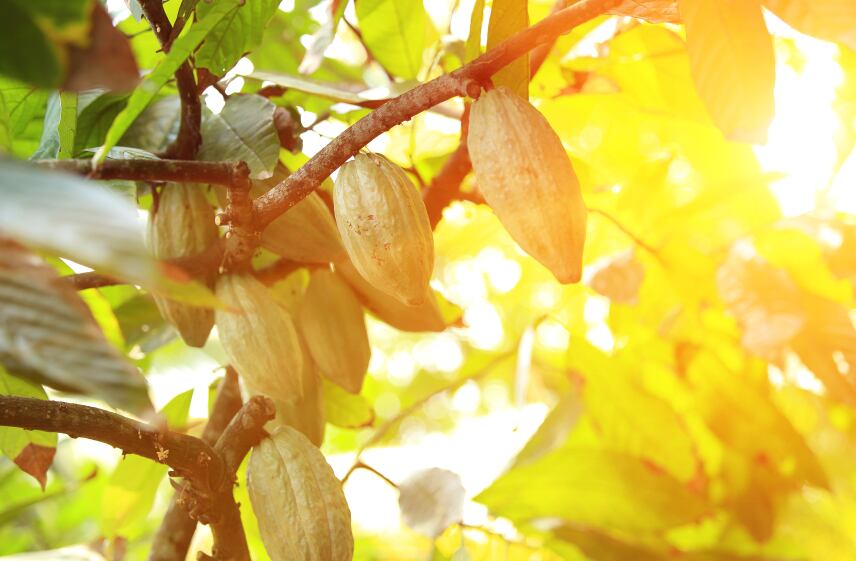
Data to combat deforestation and child labour
Child labour remains at high levels in the sector, with an estimated 2.1 million children working in cocoa fields in the Ivory Coast and Ghana alone.
Expanding cocoa production is also a contributor to negative environmental impacts, such as deforestation. A report released last year by Mighty Earth highlighted the problem, documenting how in several national parks and other protected areas in the Ivory Coast and Ghana, 90% or more of the land mass has been converted to cocoa.
Cocoa Compass sets out Olam Cocoa’s sustainability ambition for the future of cocoa, including its intent to curb both child labour and deforestation.
The company said this latest milestone puts it ‘on track’ to meet a commitment to ensure ‘100% deforestation and child labour monitoring’ across all managed sustainability programmes worldwide in its direct supply chain by the end of 2020.
This, Brooks noted, would be impossible without first knowing where its directly supplied cocoa comes from.
“Achieving 100% traceability in our direct source supply chain is a significant step towards our longer-term goals. By collecting detailed farm and community data, we can tailor our sustainability programmes to the specific needs of individual farmers and cocoa-growing communities for maximum impact. So, it’s fair to say today’s milestone it is a crucial step towards unlocking the answers to eradicating child labour and deforestation.”
The traceability platform builds on insights from existing tools, namely the Olam & Farmer Information System (OFIS), which feeds through to Olam’s sustainability insights platform, AtSource.
A dashboard shows where the cocoa beans have come from, as well as the social and environmental impact they have had on their journey from source to manufacturer. Over 325,000 cocoa farmers across Asia, Africa and South America are now using Olam’s sustainability technology, the company revealed.
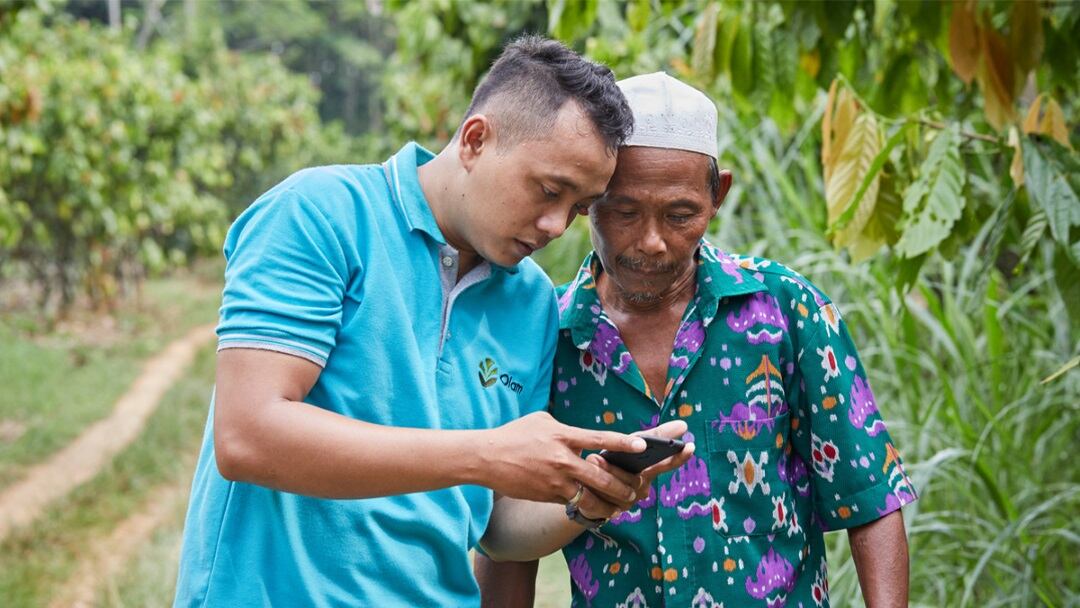
Data has been a key enabler for action, allowing Olam Cocoa to take a joined up approach to issues as diverse as deforestation and the use of child labour, Brooks observed.
“It's about harnessing data and using it intelligently to identify where we’re doing well, and where we need to take action. To achieve 100% traceability, we collect data via our OFIS and track cocoa at every stage in the supply chain across nine countries. This means we can combine our traceability data with other metrics tracked through OFIS, such as Child Labour Monitoring and Remediation (CLMRS) and deforestation data. By doing that, we can build a powerful picture of our cocoa supply chain, identify issues and tailor sustainability programmes accordingly.”
This data will also be shared with Olam’s food industry customers, allowing them in turn to develop a clearer picture of the social and environmental impact of their products. “Our customers will also have access to this data through AtSource, our sustainability insights platform, giving them unprecedented transparency of where their cocoa beans have come from, as well as the social and environmental impact they have had on their journey,” he elaborated.
Collaboration to address indirect supply chain
While Olam has invested to develop its traceability and transparency capabilities, Brooks stressed that technology will only get you so far.
Detailing Olam Cocoa’s approach, Brooks continued: “This technology works best when we combine it with our close farmer relationships and expertise on the ground. That’s why we’re rolling out CLMRS across our supply chain by equipping community leads with a phone app that they can use to digitally register farmers and their households and upload social data to OFIS.
“Putting this technology in the hands of community leads makes it possible to identify children who are at high risk and take action much more quickly compared to paper based systems that have traditionally been used.”
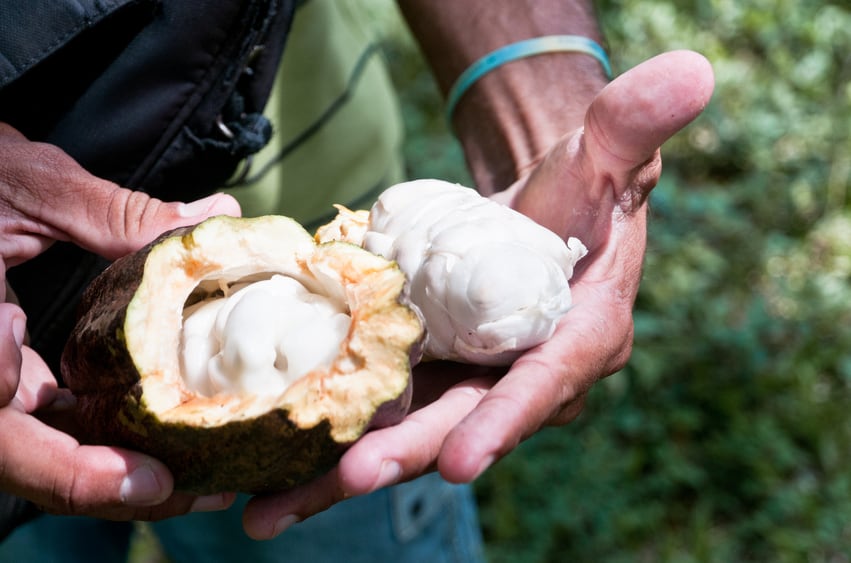
This approach is only effective for the cocoa that Olam directly sources from farmers. What about the indirect supply chain that sees cocoa beans purchased through traders and middlemen?
While Brooks revealed Olam may look at increasing its proportion of directly purchased cocoa, currently indirect supply accounts for one-third of the beans Olam Cocoa sources. And, of course, the company wants to see progress on issues like deforestation and child labour in its indirect supply chain too.
“We have been focused on achieving traceability for the majority of our cocoa supply chain first and foremost, but our ultimate ambition is to make cocoa more sustainable across the supply chain,” Brooks told FoodNavigator. “We may increase the amount of cocoa we source directly in the future depending on demand from our customers. However, we uphold high standards in our indirect supply chain.”
In order to stamp out deforestation and child labour in the indirect supply chain, Brooks stressed it is vital for a collaborative effort from industry, NGOs and governments in producing countries.
“We work with trusted third-party suppliers and have protocols in place to track the chain of custody of the cocoa. But to address challenges in traceability across the supply chain, we also need...more partnerships with governments and NGOs.
“If we are to keep driving towards [more sustainable cocoa], our customer and government partnerships are critical to making this happen and ensure that traceability systems are maintained to international audit standards.”
Olam Cocoa is currently working alongside industry and government bodies as well as NGOs to call for ‘stronger legislation in producing countries to address complex issues like child labour, deforestation and land tenure’, Brooks revealed.
For example, the cocoa processor is working with the Ivorian government, key chocolate manufacturers, cocoa processors and the Jacobs Foundation on the Children First partnership, which is urging governments to introduce national traceability systems.
Olam Cocoa also wants to see due diligence requirements established in cocoa importing regions such as Europe. “We are calling on the EU to introduce due diligence legislation on cocoa imports and encourage producing countries to introduce effective farmer registration systems,” Brooks continued.
“Public-private partnerships with others in the industry are vital to achieving our goals and making the sector more sustainable. Although there is still much to do, multi-stakeholder partnerships like the Cocoa & Forests Initiative with the World Cocoa Foundation, Grow Cocoa, the Just Rural Transition and Beyond Chocolate are essential elements for driving lasting change. However, we also need a strong enabling policy environment which is why, along with other European Cocoa Association members, we are calling for EU due diligence regulation to come into force.”

